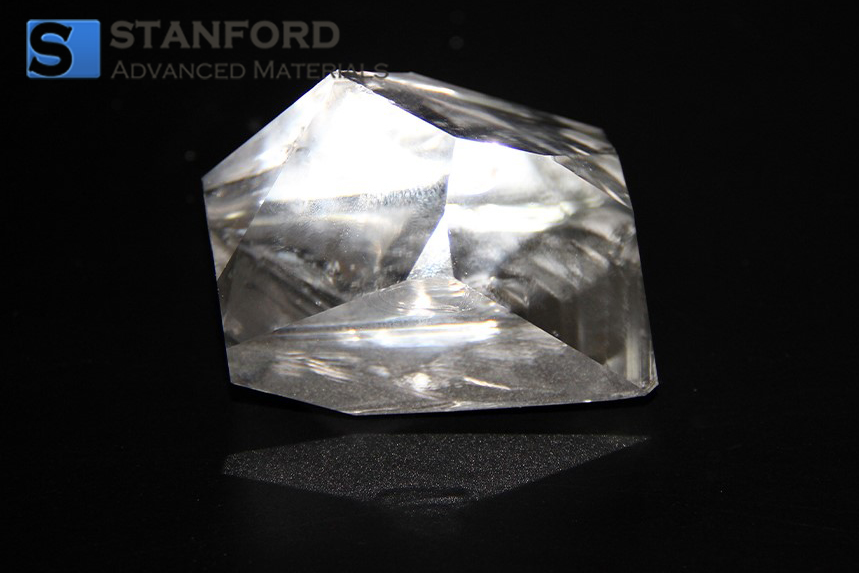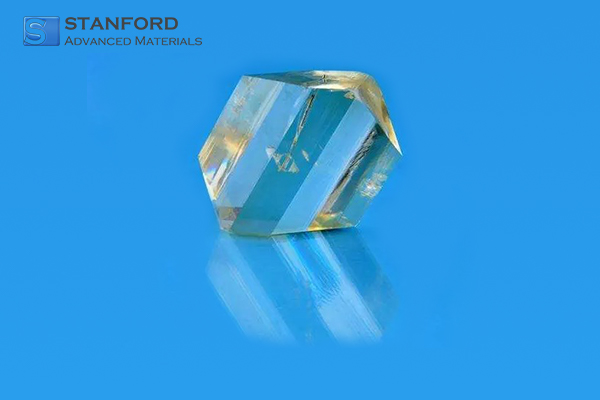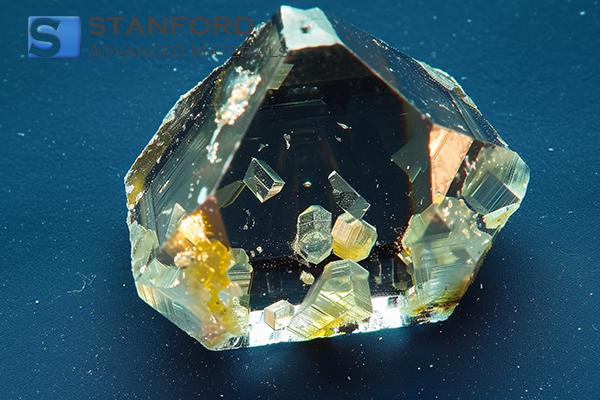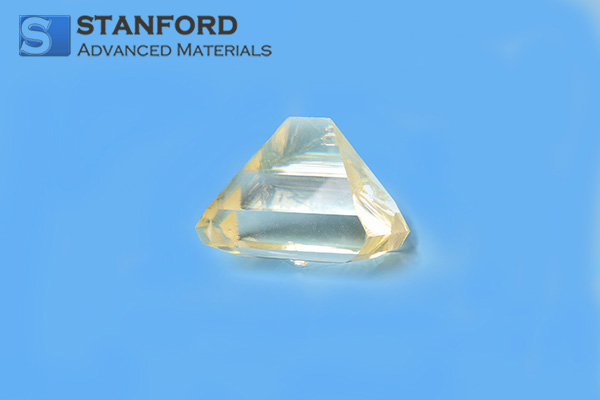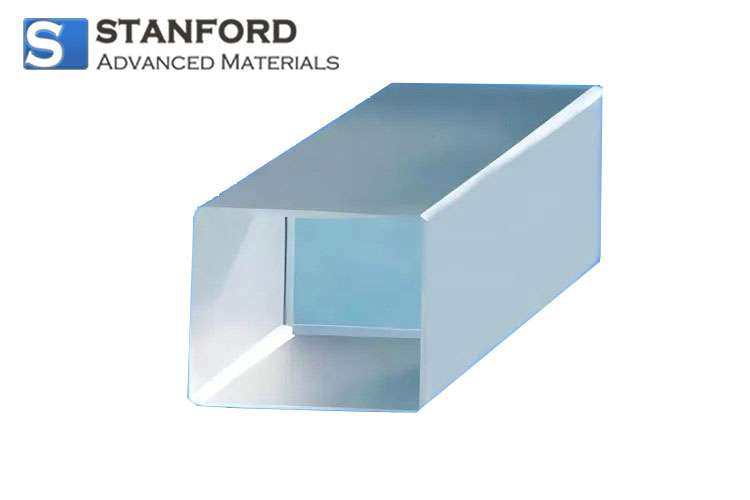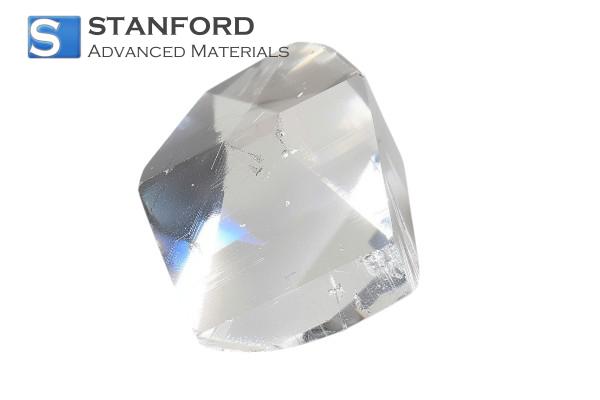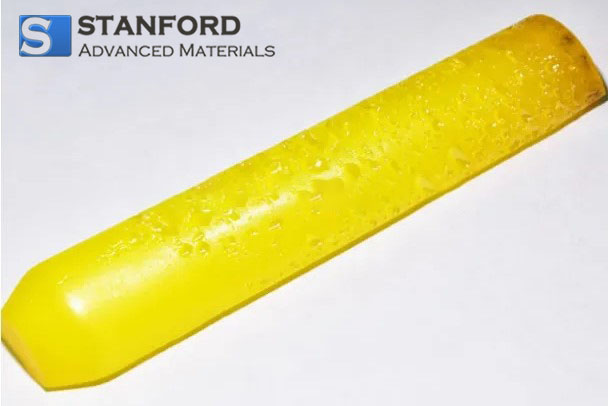Lithium Triborate Crystal Description
Lithium Triborate Crystal (LBO Crystal, LiB3O5 Crystal) is an excellent high-power ultraviolet frequency doubling crystal. It has a wide transparency range, moderately high nonlinear coupling, high damage threshold, and desirable chemical and mechanical properties.
Lithium Triborate Crystal Specification
| Flatness |
λ/8 @ 633 nm |
| Parallelism |
< 20 arcsec |
| Perpendicularity |
< 5 arcmin |
| Angle tolerance |
< 30 arcmin |
| Aperture tolerance |
± 0.1 mm |
| Surface quality |
10/5 scratch & dig per MIL-O-13830A |
| Clear aperture |
90% of full aperture |
Physical and Optical Properties
| Chemical formula |
LiB3O5 |
| Crystal structure |
orthorhombic, mm2 |
| Optical symmetry |
Negative biaxial |
| Space group |
Pna21 |
| Density |
2.47 g/cm3 |
| Mohs hardness |
6 |
| Optical homogeneity |
∂n = 10-6 cm-1 |
| Transparency region at “0” transmittance level |
155 – 3200 nm |
| Linear absorption coefficient at 1064 nm |
< 0.01 % cm-1 |
Refractive indices:
at 1064 nm
at 532 nm
at 355 nm |
nx ny nz
1.5656 1.5905 1.6055
1.5785 1.6065 1.6212
1.5971 1.6275 1.6430 |
| Sellmeier equations (λ, μm) |
nx2 = 2.4542 + 0.01125 / (λ2 – 0.01135) – 0.01388 λ2 |
| |
ny2 = 2.5390 + 0.01277 / (λ2 – 0.01189) – 0.01849 λ2
+ 4.3025 × 10-5λ4 - 2.9131 × 10-5λ6
|
| |
nz2 = 2.5865 + 0.01310 / (λ2 – 0.01223) – 0.01862 λ2
+ 4.5778 × 10-5λ4 - 3.2526 × 10-5λ6
|
| Phase matching range Type 1 SHG |
554 – 2600 nm |
| Phase matching range Type 2 SHG |
790 – 2150 nm |
NCPM SHG temperature dependence:
Type 1 range 950 – 1300 nm
Type 1 range 1300 – 1800 nm
Type 2 range 1100 – 1500 nm |
T1 = - 1893.3λ4 + 8886.6λ3 – 13019.8λ2 + 5401.5λ + 863.9
T2 = 878.1λ4 – 6954.5λ3 + 20734.2λ2 – 26378λ + 12020
T3 = - 21630.6λ4 + 112251λ3 – 220460λ2 + 194153λ – 64614.5
|
| NCPM SHG at 1064 nm Type 1 temperature |
149 °C |
| NCPM SHG at 1319 nm Type 2 temperature |
43 °C |
| Walk-off angle |
7 mrad (Type 1 SHG 1064 nm) |
| Thermal acceptance |
6.4 K×cm (Type 1 SHG 1064 nm) |
| Angular acceptance |
6.5 mrad×cm (Type 1 SHG 1064 nm)
248 mrad×cm (Type 1 NCPM SHG 1064 nm) |
| Nonlinearity coefficients at 1064nm: |
d31 = (1.05±0.09) pm/V
d32 = -(0.98±0.09) pm/V
d33 = (0.05±0.006) pm/V |
Effective nonlinearity:
XY plane
YZ plane |
dooe = d32 cosφ
doeo = deoo = d31 cosθ |
| Expansion coefficients: |
αx = 10.8 × 10-5K-1
αy = -8.8 × 10-5K-1
αz = 3.4 × 10-5K-1
|
*For more optical information, please Contact us.
Lithium Triborate Crystal Applications
1. Frequency Doubling (Second-Harmonic Generation, SHG):
LBO crystals are frequently used for frequency doubling, where they convert an input laser beam of one wavelength into a laser beam of exactly half the wavelength.
2. Sum-Frequency Generation (SFG):
LBO crystals are employed in sum-frequency generation processes. By combining two input laser beams with different wavelengths, LBO can produce a new output wavelength that is the sum of the two input frequencies.
3. Optical Parametric Oscillators (OPOs) and Amplifiers (OPAs):
LBO crystals are crucial components in optical parametric oscillators and amplifiers. These devices allow for the generation of tunable laser output at various wavelengths, making them valuable in spectroscopy, material analysis, and scientific research.
4. Laser Systems:
LBO crystals can be integrated into various laser systems, including solid-state lasers, tunable laser sources, and mode-locked lasers. They are used in applications such as telecommunications, medical technology, and military laser systems.
5. Nonlinear Optical Studies:
Researchers use LBO crystals in nonlinear optical studies to investigate fundamental aspects of light-matter interactions, quantum optics, and quantum information processing.
6. Biomedical Imaging:
LBO crystals are used in multiphoton microscopy, a technique for high-resolution imaging of biological specimens. They enable deep tissue imaging with reduced photodamage, making them valuable in life sciences and medical research.
7. Remote Sensing:
LBO crystals can be employed in remote sensing applications, such as LIDAR (Light Detection and Ranging). They are used for environmental monitoring, atmospheric studies, and geological surveys.
8. Defense and Security:
LBO crystals find applications in military laser systems, laser rangefinders, target designators, and countermeasure systems for defense and security purposes.
9. Material Processing:
In industrial settings, LBO crystals are used in laser material processing applications, including laser cutting, welding, and marking. Their ability to generate high-energy laser beams at various wavelengths is valuable for precision material processing.
10. Scientific Research:
LBO crystals are used in various scientific experiments and research studies, particularly in the field of nonlinear optics. Their nonlinear properties enable researchers to explore and understand the behavior of light in new ways.
Lithium Triborate Crystal Packaging
Our Lithium Triborate Crystal is carefully handled during storage and transportation to preserve the quality of our product in its original condition.
Lithium Triborate Crystal FAQs
Q1 How does LBO compare to other nonlinear crystals like KTP or BBO?
- LBO vs. KTP: LBO has a higher damage threshold and broader phase-matching range but lower nonlinear coefficients.
- LBO vs. BBO: LBO offers better thermal and mechanical stability and is less hygroscopic, making it more robust for high-power laser systems.
Q2 What are the phase-matching properties of LBO Crystals?
LBO crystals support both:
- Type I phase matching: Used for higher efficiency in SHG and THG.
- Type II phase matching: Offers flexibility in wavelength tuning.
Q3 What is the operating temperature range of LBO Crystals?
LBO crystals have a wide operating temperature range, typically from -50°C to +200°C, making them suitable for applications requiring temperature stability.


 English
English Española
Española Deutsch
Deutsch Français
Français Italiano
Italiano